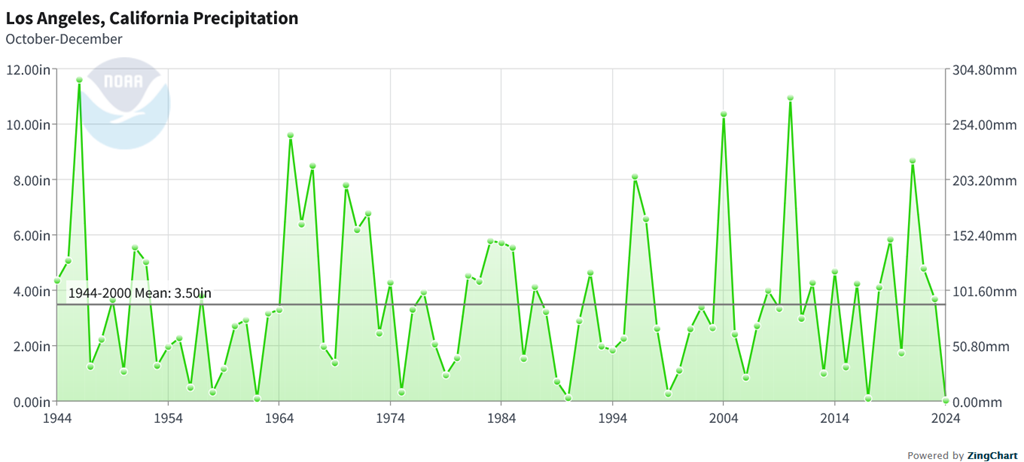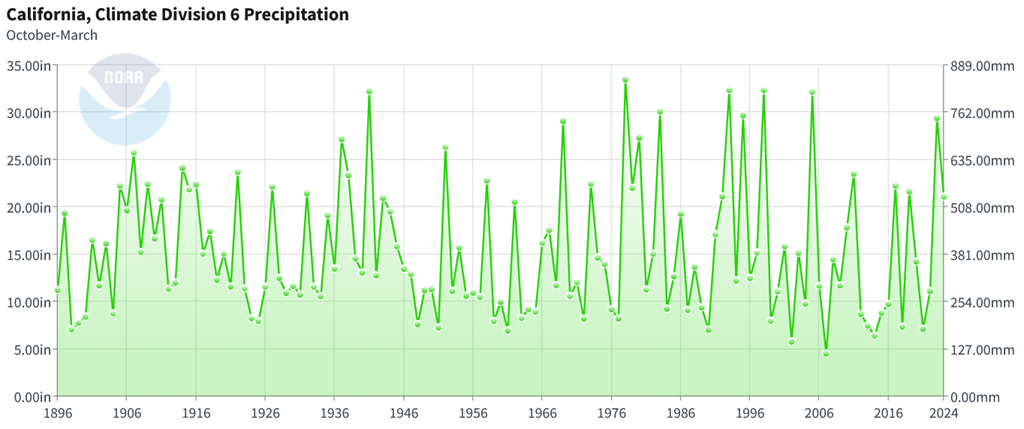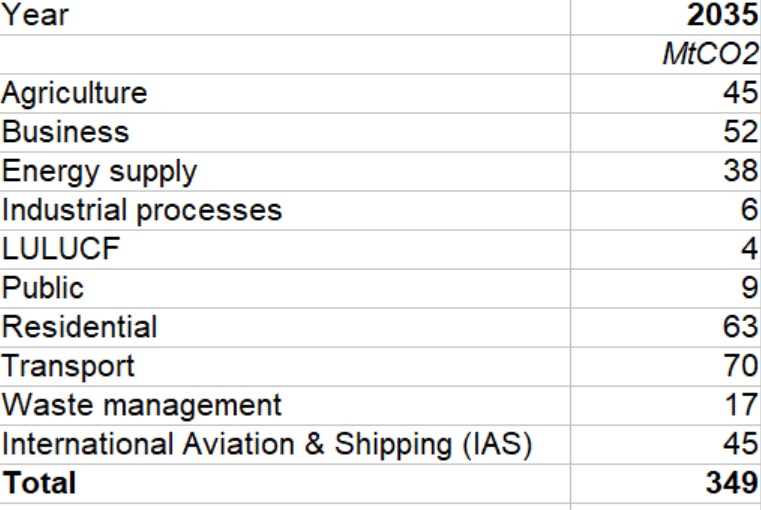IT DIDN’T take long! As expected, the climate blob has decided that climate change made the Los Angeles wildfires much more likely. Their machinations have been tortuous, because as I noted at the time the last two years in California have been wetter than normal.
But that did not stop the World Weather Attribution organisation claiming that it was the last three months of dry weather that was the problem, saying that low rainfall between the months of October and December is now about 2.4 times more likely compared with the preindustrial climate.
Yes, there was not much rain in Los Angeles in the three months leading up to the fires. But there is nothing unusual about that sort of weather, and certainly no evidence that low rainfall in those months is becoming 2.4 times more likely, as they absurdly claim.

https://www.ncei.noaa.gov/access/monitoring/climate-at-a-glance/national/time-series
But just as that scam was exposed, another even more ridiculous theory was being given the full blare of publicity by the BBC:
‘Climate change has made the grasses and shrubs that are fuelling the Los Angeles fires more vulnerable to burning, scientists say. Rapid swings between dry and wet conditions in the region in recent years have created a massive amount of tinder-dry vegetation that is ready to ignite.
‘Decades of drought in California were followed by extremely heavy rainfall for two years in 2022 and 2023, but that then flipped again to very dry conditions in the autumn and winter of 2024.
‘Scientists say in a new study that climate change has boosted what they call these “whiplash” conditions globally by 31-66 per cent since the middle of the 20th century. “This whiplash sequence in California has increased fire risk twofold,” said lead author Daniel Swain from UCLA. “First, by greatly increasing the growth of flammable grass and brush in the months leading up to fire season, and then by drying it out to exceptionally high levels with the extreme dryness and warmth that followed”.’
So it was too wet and too dry!
Once again the actual data shows the new study to be just as fake as the previous one. Most of California’s rain comes in the winter half, October to March; the last two years have been wetter than average in the LA region, but no more so than many other years on record:

https://www.ncei.noaa.gov/access/monitoring/climate-at-a-glance/national/time-series
Neither is there any evidence of bigger swings from year to year.
Patrick Brown of the Breakthrough Institute has written a full scientific rebuttal here, which demolishes this latest fake science.
The climate lobby, however, is not interested in facts or data. It is interested only in headlines, provided by the complicit and corrupt MSM.
The real objective was made clear by Dr Friederike Otto, co-lead of World Weather Attribution and senior lecturer in climate science at Imperial College London, when they wheeled out their latest disinformation: ‘In 2025, the choices facing world leaders remain the same – to drill and continue to burn oil, gas and coal and experience ever more dangerous weather, or transition to renewable energy for a safer and fairer world.’
UK must cut emissions by 60 per cent in ten years
THE UK Government has formally committed to reducing emissions of carbon dioxide and other greenhouse gases (GHG) to 19 per cent of 1990 levels by 2035.
In practice, this means cutting emissions from the current level of 389 MtCO2 (million tonnes of carbon dioxide) to 155 MtCO2, a reduction of 60 per cent. The pledge was initially made by Sir Keir Starmer at COP29 in Azerbaijan in November and has now been officially submitted to the UN as an update of our Nationally Determined Contribution (NDC), as required by the Paris Climate Agreement.
NDCs are not legally binding, but I doubt if it will take long for a rogue far-left judge to use it to block some infrastructure or industrial development.
How then can such a massive reduction in emissions be made without wrecking the economy? The answer is, it can’t!
Every year the government publishes projections of emissions for each year to 2050. They are based on what is called a ‘Reference Case’, which takes account of any policies that have either been implemented or those that are planned where the level of funding has been agreed and the policy design is near-final.
The latest projections were published in December 2024. They project a cut in all GHG emissions from 389 MtCO2 in 2023 to 304 MtCO2 in 2035. In other words, the new 2035 target is half those projections.
Most of the savings already projected are centred around electricity generation and transport – 39 and 41 MtCO2 respectively. These reflect the previous government’s 2035 Clean Power targets (rather than Labour’s 2030 ones) and the various ZEV mandates already in force.
This raises the question of where an additional saving of 149 MtCO2 can come from. The chart below shows how the existing projection of 304 MtCO2 is made up. The table also includes a figure for International Aviation and Shipping, which although not part of the NDC, will in future have to be cut to 19 per cent of 1990 levels as well.

https://www.gov.uk/government/publications/energy-and-emissions-projections-2023-to-2050
There may be scope for small further cuts in the power sector, as Labour’s plan for clean power is slightly more stringent. But the projections already assume a doubling of renewable electricity generation. Neither is there any more scope for transport savings, which the ZEV Mandate is already maximising.
Given the pathetically low number of heat pump installations – 60,000 last year – only an immediate ban on gas boiler sales could make a dent in residential emissions, currently 54 MtCO2 and projected actually to rise by 2035.
So where else can savings be made?
Neither industry or agriculture has the money to invest in energy transition, even if it wanted to or was able to. Only a large-scale shutdown of industry and farming could make any substantial cuts in emissions.
The other sectors are too small to make any real difference.
In addition there is little scope to reduce emissions from aviation and shipping. Lord Deben has already said that sustainable fuel will make little difference to aviation, and we have no control over international shipping. That means that the savings pencilled in for this sector will have to be made elsewhere.
The government has committed the UK to this new target without having the faintest idea of how to achieve it.
A couple of weeks ago, we looked in detail at the Climate and Nature Bill, which would have done great damage. These new targets are set to be almost as disastrous. They can be met only by drastically cutting energy use, restricting travel, banning gas boilers, shutting down swathes of agriculture and impoverishing people while destroying large sectors of the economy.











